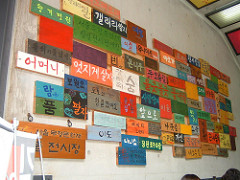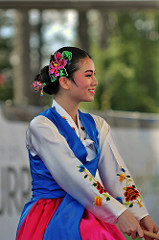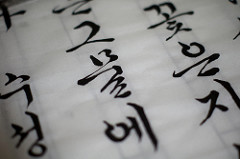Archive for February, 2015
Changyeong Palace Video Tour Posted by sasha on Feb 26, 2015
Tour one of Seoul’s Five Grand Palaces – Changyeonggung – in this short video. It was destroyed twice by the Japanese, but has been somewhat restored and is a nice place to spend an afternoon in the Korean capital.
The Five Grand Palaces of Seoul Posted by sasha on Feb 24, 2015
The last kingdom in Korea was the Joseon Dynasty (조선왕조), which lasted from 1392 all the way until 1910. Over the reign of Joseon, Seoul became the capital city and center of state affairs. Throughout the years, the kings had many grand palaces built here – five of them are currently open to the public. For…
Learn Korean “Already” Posted by Soo on Feb 23, 2015

“Already” is high frequency when you speak or listen to Korean, and there are two ways to say already in Korean “벌써/beol sseo and 이미/e mi”. Both of them are adverb and have the same meaning. However, when you use 벌써, it includes connotation of surprise. For instance, you have an appointment at 10 in…
Learn Korean “Also and Again” Posted by Soo on Feb 16, 2015

“Also” is very high frequency Koreans use, so you have to be familiar to know how to use this. Also is 또한/ddo han or 도/do in Korean. 또한 it has another similar meaning of “in addition.” It is using as an adverb in a sentence and you can use it at the beginning of sentence…
Learn Korean “Want – and Want to -” Posted by Soo on Feb 12, 2015
“Want to-” is one of useful phrase you can use. The grammar rule is “Want to -” V.S. + 고 싶다. Please read examples below. To meet 만나다-만나고 싶어요 To eat먹다- 먹고 싶어요 To sleep 자다-자고 싶어요 (I want to go to bed- 잠을 자고 싶어요) To go 가다-가고 싶어요 To leave 떠나다-떠나고 싶어요 To…
Learn Korean Conjugating the “요/yo” form Posted by Soo on Feb 2, 2015

Korean Conjugating the “요/yo” form 요/yo form is one of basic Korean grammar and you might already learn this. However, if you are still not sure this, it will be good to read this post. Adding 요/yo to verb stem is when speaking politely and 요/yo is NOT for close friends (same age as you…


